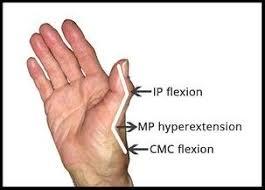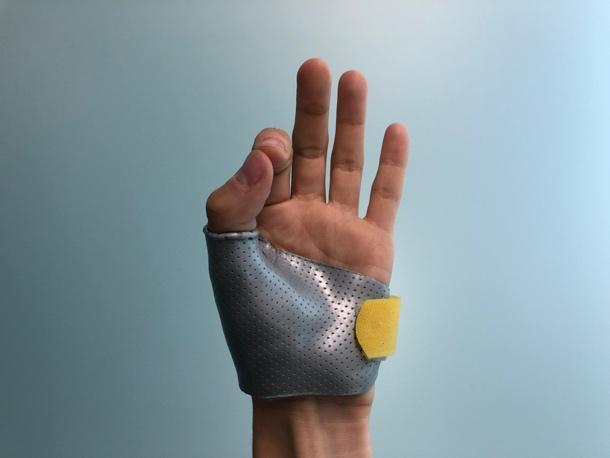For all those ‘50 something ‘ ladies out there, have you been bothered with pain at the base of your thumb when you pinch, open a jar or weed the garden?
Have you mentioned this to your GP or physio at the end of a consultation with a dismissive comment about this being a ‘bit of arthritis’ and ‘there is nothing you can do’?
If this was your knee it would be given a lot more attention by your treaters.
If your thumb is 60% of your hand function it deserves the same priority. Possibly more. These days, prescribed exercise as analgesia and its preventative role in delaying surgery is well recognised.

Why are the ladies more likely to have pain at the base of their thumb?
Anatomically this saddle shaped joint (called the 1st Carpometacarpal joint) is shallower in women than men making it more unstable. What we gain in mobility from this multidirectional joint we sacrifice stability.
This means as we get older it is more inclined to become unstable and painful especially during pinch. It has a very short ‘warranty’ period compared with other more stable joints and therefore more likely to develop arthritis earlier than any other joints in the hand.

We recognise that there is no cure for arthritis. But hopefully we can slow the progression and deformity and potentially avoid the need for surgery.
So let’s talk about what you can do !
- Topical anti-inflammatory creams can give good short-term pain relief. There are a number of excellent natural anti-inflammatory creams that won’t upset your stomach with longer term use such as ‘Black and Blue’ or ‘Fisiocream’ , both cooling and arnica based or ‘Rocksauce’ (warming and chilli based).
- Supplements that are widely used and recommended by Rheumatologists for helping to relieve more minor symptoms of joint pain. More traditional supplements such as fish oil can take up to 8 weeks before symptom relief. Curcumin (Turmeric) is also widely used and is well supported by research for relief of joint pain.
- Non-steroidal anti inflammatories (NSAIDs) can also be used on advice from your GP for temporary relief from a flare up.
- Activity modification and Joint protection is an important long-term strategy. Hand therapists are skilled in teaching you to identify what tasks cause you pain like knitting, gardening or vacuuming and then identifying alternative ways of doing them to minimise joint pain such as using a jar opener, right angled knife, lever taps, or ‘weed slicers’.
- Splints
Hand therapists are experts in the fabrication of custom-made thermoplastics splints. Commonly ‘off the shelf ‘splints will be bulky and ill-fitting for treating this problem. More suitable are custom made splints that specifically unload the painful joint while allowing you to perform a functional pinch. These splints are water proof, can be worn in the garden and kitchen and during most functional activities.
- Stabilisation Exercise
After a reduction in pain from splinting your hand therapist will teach you specific exercises that correct pinch habits to prevent overloading the painful joint. These can be challenging but they can provide excellent pain relief even when you have advanced arthritis. - If Hand therapy fails to give relief your hand therapist can recommend you to hand surgeon who can discuss a variety of surgical options and the best timing of this.
This blog has been written by Jane Aarons.
If you would like to make an appointment or discuss your base of thumb pain, please call or email us, and our Hand Therapists would love to give you further advice.